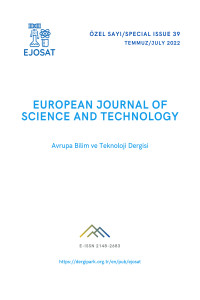Öz
Exciton polariton condensates are the most well-studied case of Bose-Einstein condensation (BEC) of quasiparticles. Together with their prominent fundamental importance, the exciton-polariton condensates have a wide spectrum of engineering applications covering interferometry and metrology, different types of SQUIDs and accelerometers, and forming a universal gate set for quantum computing via the control with external laser pulses. The efficient experimental manipulation with the polariton BEC can be realized via the bosonic final-state stimulation, matter-wave amplification, or by lasing of polaritons, but a satisfactory theoretical model for such control has not been developed yet. Here we study the polariton matter-wave amplifier based on the stimulated scattering of massive particles. The amplification of the injected quasiparticles is achieved through an elastic scattering of so-called lower polaritons (LPs). Such an amplifier has many advantages compared with a standard lasing or using a photon amplifier: it can provide a sufficient gain coefficient. To develop an efficient control algorithm for the polariton amplifier we use here the dynamical model for the LP population proposed by Ciuti, Savona, et al. in 1998. The phenomenological model for the gain coefficient is based on the experiments with cold collisions of polaritons performed by Deng, Haug, and Yamamoto in 2010 and later. We use different feedback algorithms (speed gradient vs target attractor) to track efficiently the polariton population in the amplifier. We compare the pros and cons of our alternative approaches and discuss their possible engineering applications.
Anahtar Kelimeler
Exciton polariton condensate Matter-wave amplifier Cold quasiparticle collisions Lower polaritons Feedback control
Proje Numarası
Yok
Kaynakça
- Byrnes, T., Kim, N. Y., Yamamoto, Y. (2014). Exciton-polariton condensates. Nature Physics, 10, 803-813, doi.org/10.1038/nphys3143.
- Ciuti, C., Savona, V., Piermarocchi, C., Quattropani. A., Schwendimann, P. (1998). Role of the exchange of carriers in elastic exciton-exciton scattering in quantum wells. Physical Review B, 58, 7926, doi.org/10.1103/PhysRevB.58.7926.
- Deveaud-Plédran, B. (2012). On the condensation of polaritons. Journal of the Optical Society of America B, 29(2), A138-A145, doi.org/10.1364/JOSAB.29.00A138.
- Kavokin, A., Liew, T. C. H., Schneider, C., Lagoudakis, P. G., Klembt, S., Hoefling, S. (2022). Polariton condensates for classical and quantum computing. Nature Reviews Physics, 4, 435-451, doi.org/10.1038/s42254-022-00447-1.
- Xu, X., Bao, R., Liew T. C. H. (2022). Non-Hermitian topological exciton-polariton corner modes, arXiv:2202.06275 [cond-mat.mes-hall]. [Online]. Available: https://arxiv.org/pdf/2202.06275.pdf
Öz
Eksiton polariton kondensatları, kuasiparçacıkların Bose-Einstein yoğunlaşmasının (BEC) en iyi çalışılmış halidir. Öne çıkan temel önemleriyle birlikte, eksiton-polariton kondensatları, interferometri ve metroloji, farklı SQUID türleri ve ivmeölçerleri kapsayan ve harici lazer darbeleri ile kontrol yoluyla kuantum hesaplama için evrensel bir kapı seti oluşturan geniş bir mühendislik uygulamaları yelpazesine sahiptir. Polariton BEC ile verimli deneysel manipülasyon, bozonik son durum uyarımı, madde-dalga amplifikasyonu veya polaritonların lazerlenmesi yoluyla gerçekleştirilebilir, ancak bu tür kontrol için tatmin edici bir teorik model henüz geliştirilmemiştir. Burada, büyük kütleli parçacıkların uyarılmış saçılımına dayanan polariton madde-dalga yükselticisini incelemekteyiz. Enjekte edilen kuasiparçacıkların amplifikasyonu, alt polaritonların (AP'ler) elastik saçılmasıyla sağlanır. Böyle bir yükselticinin standart bir lazerle veya bir foton yükselticisi ile karşılaştırıldığında birçok avantajı vardır: yeterli bir kazanç katsayısı sağlayabilir. Polariton amplifikatörü için verimli bir kontrol algoritması geliştirmek için burada Ciuti, Savona ve diğerleri tarafından önerilen AP popülasyonu için dinamik modeli kullanmaktayız. Kazanç katsayısı için fenomenolojik model, 2010 ve sonrasında Deng, Haug ve Yamamoto tarafından gerçekleştirilen soğuk polariton çarpışmaları deneylerine dayanmaktadır. Amplifikatördeki polariton popülasyonunu verimli bir şekilde izlemek için farklı geribesleme algoritmaları (hız gradyanı vs hedef çekici) kullanmaktayız. Alternatif yaklaşımlarımızın artılarını ve eksilerini karşılaştırır ve olası mühendislik uygulamalarını tartışmaktayız.
Anahtar Kelimeler
Eksiton polariton yoğunlaşması Madde dalgası yükselticisi Soğuk kuasiparçacık çarpışmaları Alt polaritonlar Geribesleme kontrolü
Destekleyen Kurum
Abdullah Gül Üniversitesi
Proje Numarası
Yok
Teşekkür
Yok
Kaynakça
- Byrnes, T., Kim, N. Y., Yamamoto, Y. (2014). Exciton-polariton condensates. Nature Physics, 10, 803-813, doi.org/10.1038/nphys3143.
- Ciuti, C., Savona, V., Piermarocchi, C., Quattropani. A., Schwendimann, P. (1998). Role of the exchange of carriers in elastic exciton-exciton scattering in quantum wells. Physical Review B, 58, 7926, doi.org/10.1103/PhysRevB.58.7926.
- Deveaud-Plédran, B. (2012). On the condensation of polaritons. Journal of the Optical Society of America B, 29(2), A138-A145, doi.org/10.1364/JOSAB.29.00A138.
- Kavokin, A., Liew, T. C. H., Schneider, C., Lagoudakis, P. G., Klembt, S., Hoefling, S. (2022). Polariton condensates for classical and quantum computing. Nature Reviews Physics, 4, 435-451, doi.org/10.1038/s42254-022-00447-1.
- Xu, X., Bao, R., Liew T. C. H. (2022). Non-Hermitian topological exciton-polariton corner modes, arXiv:2202.06275 [cond-mat.mes-hall]. [Online]. Available: https://arxiv.org/pdf/2202.06275.pdf
Ayrıntılar
| Birincil Dil | İngilizce |
|---|---|
| Konular | Mühendislik |
| Bölüm | Makaleler |
| Yazarlar | |
| Proje Numarası | Yok |
| Erken Görünüm Tarihi | 26 Temmuz 2022 |
| Yayımlanma Tarihi | 31 Temmuz 2022 |
| Yayımlandığı Sayı | Yıl 2022 Sayı: 39 |

